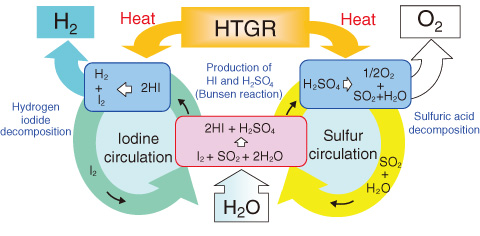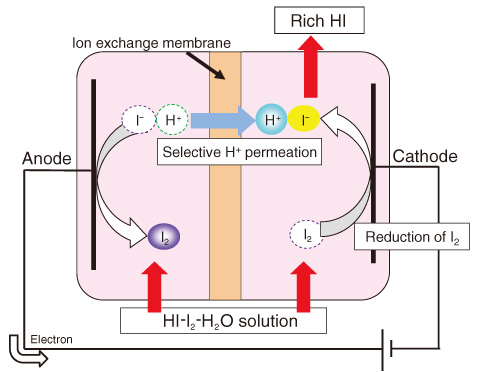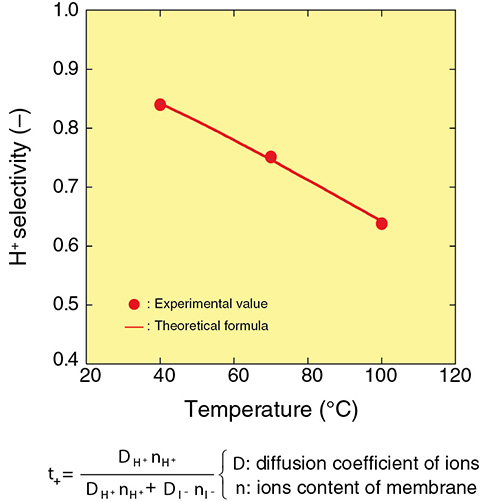
Fig.9-5 Thermochemical water-splitting IS process

Fig.9-6 Hydriodic acid concentration using HI concentrator

Fig.9-7 Temperature dependence of H+ selectivity: comparison of experimental results and theoretical formula
We have been investigating a hydrogen production method known as the iodine-sulfur (IS) process for heat application of high-temperature gas-cooled reactors (HTGRs). The IS process is a water-splitting thermochemical cycle without carbon dioxide emission that proceeds by chemical reactions of iodine and sulfur compounds (Fig.9-5). One of the important R&D goals for industrialization of the process is to improve the hydrogen production efficiency.
A task to improve efficiency is to concentrate the circulating material, hydriodic acid (HI solution, an iodine compound), with low energy consumption; therefore, we have been studying an electro-electrodialysis method. This method can enrich HI in the HI solution with a HI concentrator employing ion-exchange membranes that selectively permeate protons (H+) (Fig.9-6). Thus far, we successfully prepared novel ion-exchange membranes using a radiation-induced graft polymerization technique (radiation-grafted membranes), which are a key device for low energy consumption in the HI concentrator.
We are currently pursuing studies to improve the performance of the radiation-grafted membrane. For this purpose, we have tried to reveal the ion permeation mechanism using a mathematical model to characterize the performance.
In the model, the driving force of ion movement is assumed to be the electric potential gradient. A theoretical formula for H+ selectivity, which is an essential performance, was derived as a function of the H+ content, iodide ion content, and diffusion coefficient. The good agreement between the experimental results and the theoretical formula (Fig.9-7) shows that the model we employed is appropriate.
Next, we plan to modify the model regarding the effects of HI concentration. In addition, we will work on the development of higher-performance membranes by adjusting the membrane properties. One way to do this is by varying the membrane’s affinity to HI using grafted polymers to introduce new functional groups.
<Previous: 9-2 | Next: 10 Development of Decommissioning and Radwaste Treatment Technology >